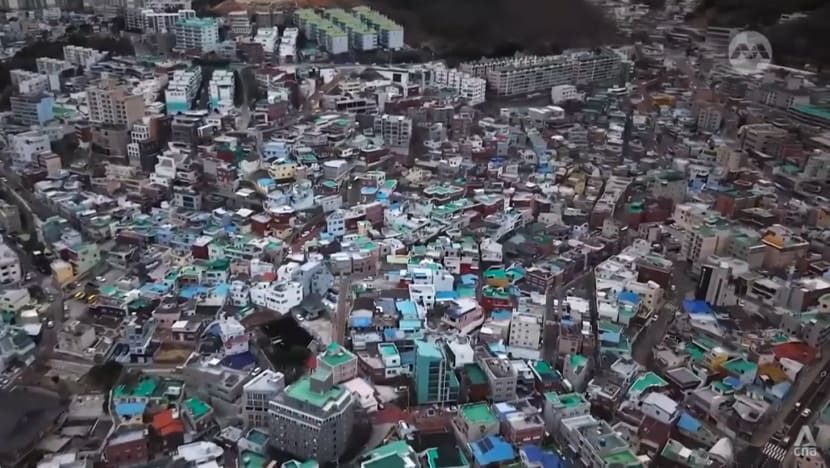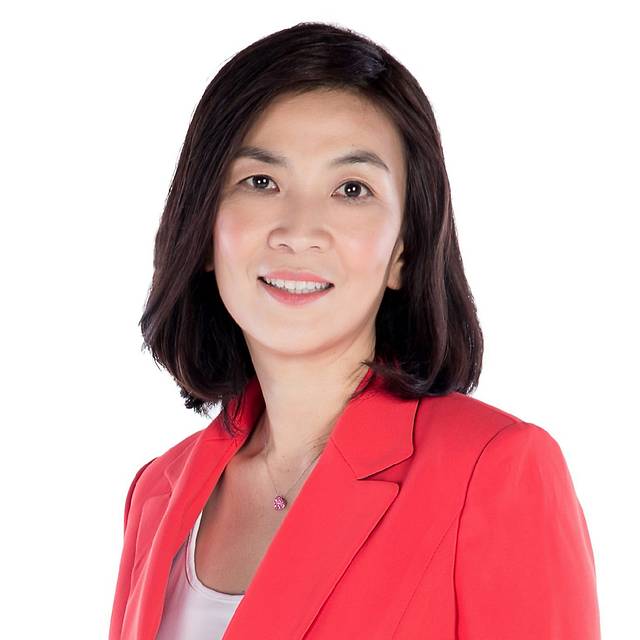Rapidly losing its youths to Seoul, ageing Busan seeks to revitalise
Officials in the country’s second-largest city are hoping that new infrastructure, including a new airport, can help revitalise the port city.

People walk next to shops along a street in Busan, South Korea. (Photo: iStock)

This audio is generated by an AI tool.
BUSAN: Like many of his peers, Busan native Lee Jeong-bin plans to leave his hometown.
The Dongseo University undergraduate hopes to work in South Korea’s automotive sector, specialising in production management or production technology. But opportunities in the southeastern port city are scarce.
“There aren't many companies in Busan, so I’m considering Ulsan or Changwon," the 24-year-old told CNA.
He is far from alone – about eight in 10 students at his university hail from the city, but only a small number stay on after graduation.
The steady exodus of young professionals from Busan is one factor for its population decline.
The city has lost about 600,000 people over the past three decades, with its population dropping from a peak of 3.88 million in 1995 to 3.27 million last year due to an ageing population, industrial decline and low birth rates.
Lee said many young people, including his friends, leave Busan to cast a wider net when job hunting.
“It’s a bit disappointing. If there were more job opportunities and chances in Busan or other regions, they could have grown and developed with the unique advantages of their own region,” he added.
“But right now, everything is centred around the capital region and that feels somewhat discouraging.”
Dongseo University’s executive vice-president Kim Jung-sun acknowledged that students are moving away not because they want to, but to look for work.
“I think it's a social problem that's going on (with the) country being very Seoul-centred in terms of the economy and social life,” he said.
RIVAL FOR ATTRACTING RESIDENTS
More than half of the country's population now live in the Seoul metropolitan region, which includes Incheon city and Gyeonggi province.
There are worries Busan could lose its spot as South Korea's second-largest city to Incheon, which is located just 27km from Seoul.
Incheon, where South Korea's main airport is located, was designated the nation's first free economic zone in 2003.
It has drawn investments from global and local companies, including the country's largest conglomerate Samsung, which set up its biotechnology arm here.
Youths have been heading to cities like Incheon and Seoul in search of employment in industries that drive innovation and provide high-paying jobs, such as technology and finance.
One jobseeker was Park Min-woo, who works as a strategic analyst for artificial intelligence start-up Wrtn Technologies.
Park left Busan to attend a prestigious high school in Cheonan city. He then attended university in Seoul where he majored in business administration and computer science.
He said he stayed on in Seoul after graduation because he wanted to work in AI or finance. While his living expenses were not cheap, he called it a small price to pay to pursue his ambitions.
About 95,000 Koreans move to Seoul for school each year, hoping a degree from a well-regarded university will open doors.
"It's highly recommended, especially for specific industries that are considered much more frontier,” said Park.
“Sadly, Busan has lost quite a population and the companies there have been closing down.”
REVITALISING BUSAN
Busan is now attempting to retain and attract talent by supporting startups, revitalising its infrastructure and creating new investment opportunities.
The city launched various revitalisation projects beginning in 2010, aiming to transform areas which were losing their populations to business and cultural hubs.
These included the North Port waterfront redevelopment which began in 2017, bringing back life to old ports and wharves, as well as other projects that integrated art and culture into declining districts.

Unknown Diary, a café housed in a converted waterfront warehouse, is one of many businesses that are part of Busan’s urban regeneration efforts.
Busan native Kim Mi-yeon opened the cafe six years ago, amid a sea of mostly shuttered factories in Yeongdo-gu.
The district on Yeongdo Island located on Busan's southern edge was once known for its shipbuilding industry.
The government has classified it as a population extinction area after its number of residents halved from its heyday in the 1980s to 110,000 last year.
Kim said she chose to open her cafe in Yeongdo-gu instead of touristy seaside spots like Haeundae or Gwangalli because it felt authentic to her.
She added that being able to see the port and where shipbuilding workers live represents the real Busan, and that authenticity drew her in.
Unknown Diary and other cafes had to content with deserted surroundings and sparse footfall when they first opened for business.
But foot traffic gradually increased as more customers discovered the establishments.
One review by a customer stood out to Kim.
“Someone wrote, ‘This used to be such a scary place to walk through. Mumyeong Ilgi (Unknown Diary) lit it up. Thank you - I hope you stay for a long time.’ Reading that, I realised how much of a difference a well-maintained space can make in a community,” she told CNA.
She added she is hopeful that young people will slowly start coming back to Busan “if more long-lasting businesses, spaces and companies like ours emerge”.
GETTING RESIDENTS TO RETURN
Some said they would remain in Busan if they could find suitable jobs and salaries.
Kim Chul-jin, a manager who works in Dongseo University’s public affairs and communications department, is one Busan resident who returned after spending a decade in Seoul. He had moved to the capital to find work in video production.
He said he returned home as Seoul’s competitive environment made it difficult to settle down and start a family.
“The job market in Busan is definitely smaller, and salaries are lower. However, lower income comes with lower living costs… Even just outside the campus, there are affordable restaurants. Groceries are cheaper as well. So, while you earn less, you also spend less,” he said.
Lee Kyung-deok, director-general of Busan Metropolitan City’s planning bureau, said the rate of outward migration is slowing down.
"While youth out-migration has been a persistent issue, we see signs of stabilisation, with the rate of outflow slowing, compared to the past decade,” he added.
He said there is a need to improve awareness of job opportunities, and to connect local businesses that need employees with young people who said they cannot find jobs.
BUSAN AS A FUTURE HUB
Busan is also planning to improve its infrastructure with a new international airport, planned to be up and running by 2030.
Experts say the Gadeok Island New Airport could create more than 110,000 new jobs.
Lee said the airport will significantly improve accessibility to Busan. The city attracted close to three million foreign visitors in 2024, achieving a new record.
"Currently, there are only a few entry points for international travellers, so even those heading to Busan often have to pass through Incheon (International Airport),” he said.
Lee added that Busan’s position as a tourist city will be stronger once the new airport opens, with more flight routes and connections to other countries.
The city is also looking beyond tourism as it vies to become a magnet for business investment.
South Korea’s parliament is currently reviewing a proposed Global Hub City Special Act, which could allow Busan to designate special districts for finance, logistics and investment.
It will strengthen incentives for businesses and investors moving to Busan.
The government is also planning to create a hub for high-tech industries like robotics and artificial intelligence, reported local media.
“The law would provide regulatory relief and special administrative and financial benefits to support these industries,” said Lee.
“Rather than competing with other regions, we want to enhance Busan’s existing strengths.”
















